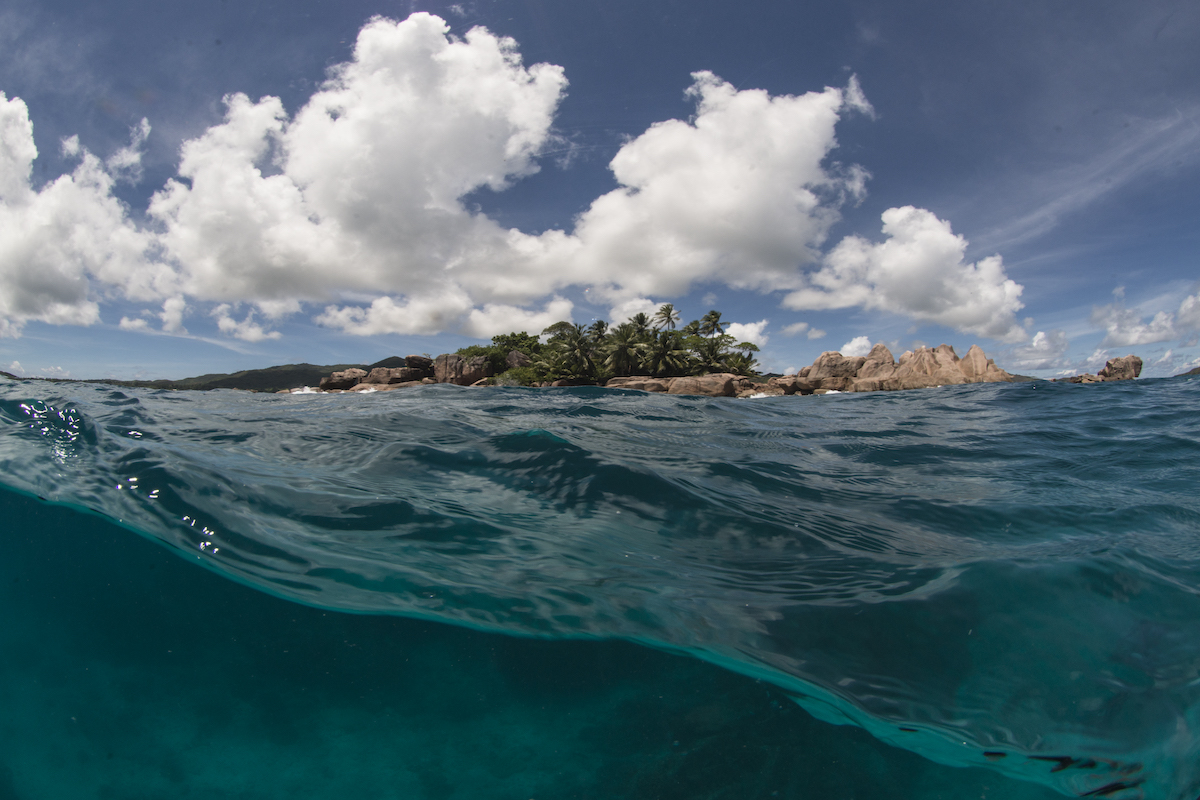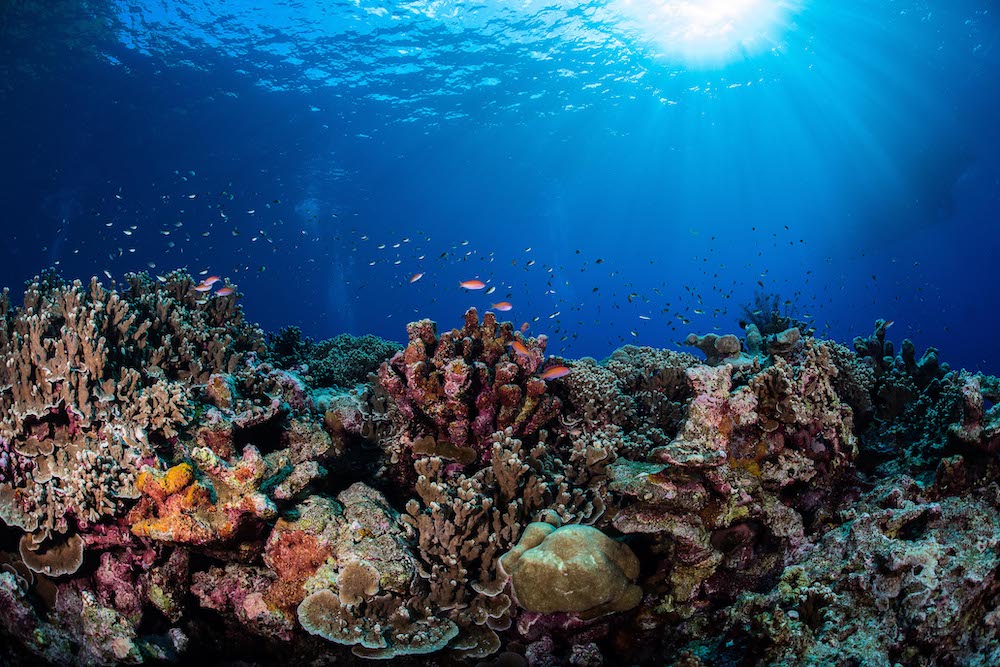Celebrating the First Comprehensive Bill on Ocean-Climate Action
Bringing Ocean Solutions to the Fight Against Climate Change
From hurricanes in the gulf to wildfires in the west, U.S. communities are already seeing profound impacts from climate change. Meanwhile, global average temperatures are on track to rise an additional 2 degrees Celsius under current policies.
To address the crisis, we need an “all hands on deck” approach that decarbonizes sectors from electricity to transportation, pursues sustainable carbon dioxide removal and builds resilience to the climate impacts that we can no longer avoid.
The ocean is a major part of the solution. In fact, ocean-based climate measures could reduce the gap between our current emissions trajectory and the emissions that would be compatible with the Paris Agreement by 6 to 21 percent by 2050, according to an analysis by the High-Level Panel.
Sponsored by Representative Raúl Grijalva, Chair of the House Natural Resources Committee, the Ocean-Based Climate Solutions Act is the first comprehensive U.S. bill on ocean-climate action. It maps a wide range of ocean-based mitigation and adaptation measures that we can bring to the fight against climate change, from reducing shipping emissions to creating climate-resilient fisheries. Topline elements of the bill are below.

Mitigation solutions
We need to decrease greenhouse gas pollution dramatically to limit warming to 1.5 degrees Celsius above preindustrial levels, which is the goal set by the Paris Agreement to avoid the worst impacts of climate change. In the coming year, the United States should do its part by rejoining the Agreement and developing an ambitious emissions reduction target for 2030. The Ocean-Based Climate Solutions Act presents a range of measures that would help support U.S. mitigation. Selected components of the bill include:
Reducing emissions from shipping
- A requirement for vessels over 5,000 GT to measure and report CO2 emissions in the U.S. Exclusive Economic Zone (EEZ), adapting best practices already used in the European Union;
- An annual report on CO2 emissions and energy efficiency of the shipping sector for public awareness;
- A Quiet Seas and Clear Skies Program, which incentivizes voluntarily limiting maximum speed to 12 knots for eligible vessels in the EEZ, resulting in reduced air and noise pollution as well as marine mammal strikes.
Supporting offshore renewable energy
- A goal to permit at least 12.5 gigawatts of energy production from offshore wind by 2025—and to permit at least 25 gigawatts by 2030;
- An allocation of $5,000,000 from each lease sale of wind energy toward developing responsible, long-term offshore wind resources.
Reducing emissions from offshore oil & gas
- A prohibition on new oil and gas pre-leasing and leasing as well as any geological or geophysical activities related to oil, gas, and methane hydrate extraction on the Outer Continental Shelf (OCS).
Advancing blue carbon storage
- The establishment of an Inter-Agency Working Group on Blue Carbon that creates a database for tracking blue carbon stocks and fluxes in the United States and utilizes models to estimate blue carbon storage potential;
- An allocation of $200 million in grants per year from 2021 to 2025 for projects to restore blue carbon ecosystems;
- The quantification of current total and net ecosystem carbon storage in coastal and marine areas and the projection of future scenarios influenced by environmental changes.

Adaptation solutions
Countless communities, economies and ecosystems are dependent on a healthy ocean—and we must build their resilience to the climate impacts that we can no longer avoid. The Ocean-Based Climate Solutions Act presents a range of adaptation solutions.
Promoting marine protected areas
Critical species habitat and biodiversity are declining due to human activities, most notably climate change. The bill aims to slow and eventually reverse this trend by establishing a process to designate ocean areas for preserving habitat and species and for building resilience to climate change. Specifically, this bill would:
- Develop and implement a plan to protect at least 30% of total U.S. ocean waters from harmful human activities by 2030
- Focus on areas that conserve coastal and marine biodiversity and reduce the impacts of climate change to the most vulnerable coastal communities, including areas that provide carbon sequestration, adaptation and resilience benefits
- Increase protections for deep sea corals by prohibiting bottom-trawling fishing and other destructive activities.
Creating climate-ready fisheries
Warming ocean waters, less oxygen and ocean acidification are just a few of the changes altering fisheries in the United States and around the world. This bill enables fishermen and resource managers to better prepare for and adjust to these new conditions by:
- Supporting the development and implementation of tools and solutions that will improve fishery management by accounting for current and anticipated changes in climate conditions;
- Promoting consumption of sustainable American seafood and seafood with low associated GHG emissions and supporting research and development.
Confronting sea level rise and flooding
Coastal communities face increasingly higher ocean waters, floods and diminished land areas due to climate change and coastal erosion. To manage these impacts, this bill would:
- Fund living shoreline projects in ocean and Great Lakes states to reinforce and protect coastal communities with natural habitats, to create buffers to attenuate the impacts coastal storms, flooding and wave energy;
- Expand the use of Coastal Resilience Funds to cover projects that use natural and nature-based approaches for enhancing the resiliency of wastewater and stormwater infrastructure;
- Establish a coordinated federal initiative to identify and assist communities interested in voluntarily relocating as a result of sea level rise and flooding, as well as other impacts, such as hurricanes and wildfires;
- Codify the Committee on Ocean Policy, previously established by executive order, which would, among other functions, evaluate community risks from storms and sea level rise and coordinate policies to build resilience.
Addressing ocean acidification and harmful algal blooms
Ocean acidification and its exacerbating impacts on harmful algal blooms can go unnoticed by human communities until disaster strikes the local ecosystem, reducing stocks of commercially and recreationally important fisheries, shellfish and damaging ecosystem and human health. As carbon dioxide pollution has already been absorbed by the ocean and altered the chemistry of coastal waters, local communities will need to better understand and adapt to these new conditions. This bill:
- Increases and enhances federal science agency research, coordination and monitoring of ocean acidification;
- Makes coastal communities eligible for federal disaster relief resulting from harmful algal blooms;
- Establishes additional research task forces and centers of excellence to better study harmful algal blooms.

Addressing multiple crises
Congress currently faces not only a climate crisis but also an economic crisis—and it should address these interrelated issues holistically. The Ocean-Based Climate Solutions Act pursues a “blue-green” economic recovery—in several ways, including by:
Supporting economic recovery
- Allocating $3 billion for projects that stimulate economic activity, employ fishermen and assist low-income, Tribal and rural communities negatively impacted by the COVID-19 pandemic. These projects would:
- Restore marine, coastal, estuarine and Great Lake habitat;
- Restore blue carbon ecosystems and natural infrastructure to protect coastal communities from sea-level rise, storm surges and flooding; and
- Remove marine debris.
Conclusion
In addition to advancing ocean-based mitigation and adaptation domestically, the bill seeks to advance U.S. leadership internationally. For example, the bill would create a plan to reduce U.S. black carbon emissions 25% to 33% below 2013 levels by 2025, consistent with the commitment under the Arctic Council. It also recommends that the United States ratify the U.N. Convention on the Law of the Sea.
U.S. leaders have a historic responsibility—and opportunity—to create a country that is powered by clean energy and resilient to climate impacts. This Ocean-Based Climate Solutions Act provides a roadmap for bringing the power of ocean solutions to the fight against climate change.
For further information on the Ocean-Based Climate Solution Act, a fact sheet may be found here.